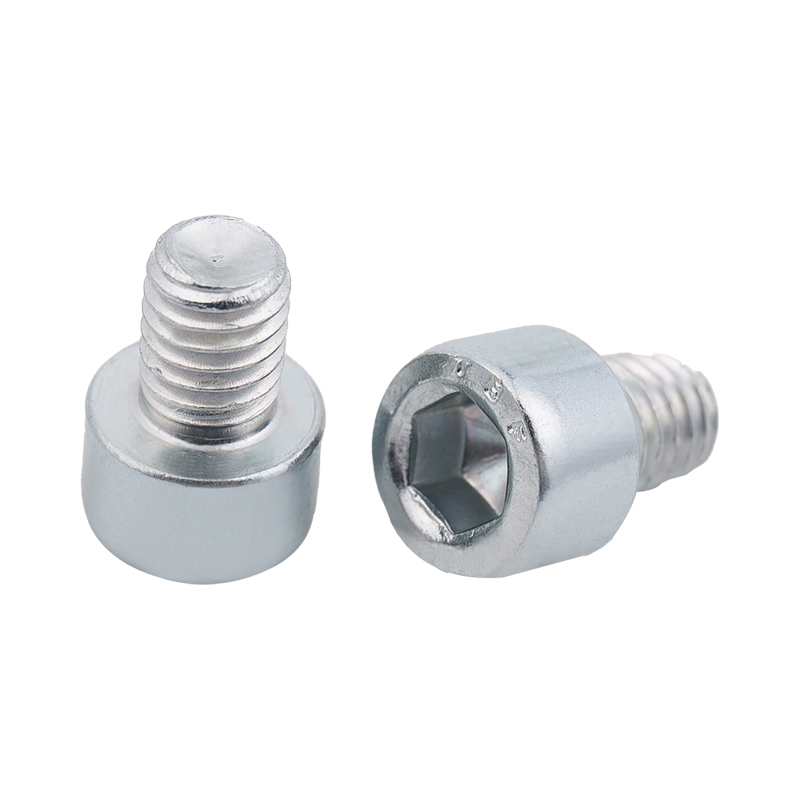-
CBB61 1.2uF/400V Black Film CapacitorsThe CBB61 1.2uF/400V capacitor features a black casing with black dielectric material, measuring 37mm × 24mm × 13mm. It includes mounting holes for se...
-
CBB61 1.5uF/400V CapacitorsThe CBB61 1.5uF/400V capacitor shares the 37mm × 24mm × 13mm black casing and black dielectric material with its 2.0uF counterpart. It also features m...
-
CBB61 2.0uF/400V CapacitorsThe CBB61 2.0uF/400V capacitor comes in a black casing with a black dielectric material, measuring 37mm × 24mm × 13mm. It includes mounting holes for ...
-
CL21 155/400V CapacitorsThe CL21 155/400V capacitor measures 22.5mm × 17.5mm × 10.3mm and is designed with a brown encapsulated casing, offering robust insulation and environ...
-
CL21 105/630V CapacitorsThe CL21 105/630V capacitor has dimensions of 22mm × 12.5mm × 7mm and features a brown encapsulated design, providing enhanced insulation and mechanic...
-
X2-104uf/305V CapacitorsThe X2-104uF/305V capacitor measures 18mm × 12mm × 11mm and features a yellow shell and yellow dielectric material, ensuring reliable insulation and l...
Stainless vs Carbon vs Alloy Steel Fasteners: A Complete Comparison
Industry News-Fasteners are essential components in nearly every industry, from construction and automotive to aerospace and manufacturing. Among the most commonly used materials for fasteners are stainless steel, carbon steel, and alloy steel. Each type offers distinct properties that make it suitable for specific applications. Understanding the differences between them is key to choosing the right fastener for your needs in terms of strength, corrosion resistance, durability, and cost.
1. Stainless Steel Fasteners
Stainless steel is a corrosion-resistant alloy primarily composed of iron, carbon, and chromium (usually at least 10.5%). This chromium content forms a passive oxide layer on the surface, offering protection against rust and corrosion.
Key Characteristics:
Excellent corrosion resistance in most environments
Non-magnetic (in austenitic grades like 304 and 316)
Lower strength compared to carbon and alloy steel
Attractive finish and good appearance retention
Higher cost due to alloying elements
Common Grades:
304 Stainless: General-purpose grade, good corrosion resistance.
316 Stainless: Higher corrosion resistance, especially in saltwater or chemical exposure.
2. Carbon Steel Fasteners
Carbon steel fasteners are made from iron with a small percentage of carbon. Depending on the carbon content, these fasteners can be classified as low, medium, or high carbon steel.
Key Characteristics:
High tensile strength and hardness, especially in medium and high carbon grades
Lower corrosion resistance, typically requiring coatings (zinc, galvanization)
Cost-effective compared to stainless and alloy steel
Magnetic
Not suitable for highly corrosive or marine environments without protection
Common Uses:
Construction (bridges, buildings)
Automotive and machinery
Applications where strength is more important than corrosion resistance
3. Alloy Steel Fasteners
Alloy steel fasteners are made by adding other alloying elements to carbon steel, such as chromium, molybdenum, vanadium, or nickel, to improve mechanical properties.
Key Characteristics:
Very high strength, toughness, and wear resistance
Can withstand extreme loads and high temperatures
Requires heat treatment (quenching and tempering) to reach desired properties
Moderate corrosion resistance, often used with protective coatings
Cost is variable, depending on alloy content and treatments
Common Uses:
Aerospace and heavy machinery
Automotive high-stress parts (engines, suspension)
Industrial applications requiring durability under stress

4. Comparison Table
| Feature | Stainless Steel | Carbon Steel | Alloy Steel |
| Corrosion Resistance | Excellent (esp. 316 grade) | Low (unless coated) | Moderate (may need coating) |
| Strength | Moderate | High (especially with high carbon) | Very high |
| Magnetism | Non-magnetic (austenitic), magnetic (others) | Magnetic | Magnetic |
| Cost | High | Low | Medium to high |
| Workability | Easy to machine and fabricate | Easy to work with | Can be more difficult due to hardness |
| Appearance | Shiny, clean finish | Usually dark or dull | Varies depending on finish and treatment |
| Typical Use Cases | Marine, food-grade, outdoor fixtures | Structural components, low-cost fasteners | High-stress, high-temperature applications |
5. Which One Should You Choose?
Choose Stainless Steel if corrosion resistance is your top priority, such as in marine, medical, or food processing environments.
Choose Carbon Steel for general-purpose structural use where high strength is required but corrosion exposure is limited.
Choose Alloy Steel for high-load, high-stress, or high-temperature applications where enhanced mechanical performance is critical.
Conclusion
Each type of steel fastener—stainless, carbon, and alloy—serves a unique purpose depending on the demands of the environment and the mechanical requirements. By understanding their differences in terms of strength, corrosion resistance, and cost, you can select the most suitable fastener material to optimize performance, longevity, and value in your specific application.



 русский
русский Español
Español